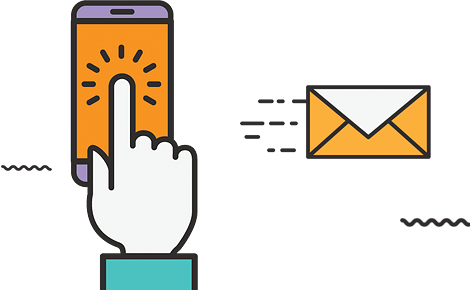- 10 min read
- Accessibility,
Diagram,
User Journey,
Usability
Since their introduction in 1999, the Web Stammer Accessibility Pointers (WCAG) bask in formed how we originate and construct inclusive digital products. The WCAG 2.x series, launched in 2008, launched determined technical requirements judged in a binary formula: either a success criterion is met or not. While this model has supported regulatory clarity and auditability, its “all-or-nothing” nature generally fails to deem the nuance of staunch person skills (UX).
Over time, that disconnect between technical conformance and lived usability has turn out to be more difficult to ignore. Of us have interaction with digital programs in advanced, generally nonlinear suggestions: navigating multistep flows, dynamic verbalize material, and interactive states. In these scenarios, checking whether or not an ingredient passes a rule doesn’t consistently solution the principle put a matter to: can anyone indubitably use it?
WCAG 3.0 is aloof in draft, but is evolving — and it represents a significant rethinking of how we analysis accessibility. In self-discipline of asking whether or not a requirement is technically met, it asks how successfully customers with disabilities can total meaningful projects. Its contemporary -based fully fully model introduces a versatile scoring blueprint that prioritizes usability over compliance, entertaining focal level toward the everyday of discover admission to in preference to the mere presence of aspects.
Draft Discipline: Formidable, But Tranquil Evolving
WCAG 3.0 was as soon as first launched as a public working draft by the World Broad Web Consortium (W3C) Accessibility Pointers Working Community in early 2021. The draft is aloof under active building and isn’t expected to prevail in W3C Recommendation self-discipline for quite quite a bit of years, if not decades, by some accounts. This extended timeline shows both the complexity of the job and the ambition within the abet of it:
WCAG 3.0 isn’t magnificent an exchange — it’s a paradigm shift.
Unlike WCAG 2.x, which focused totally on on-line pages, WCAG 3.0 targets to duvet a grand broader ecosystem, including applications, instruments, linked devices, and rising interfaces fancy voice interaction and extended actuality. It additionally rebrands itself because the W3C Accessibility Pointers (whereas the WCAG acronym stays the identical), signaling that accessibility isn’t any longer a explicit segment self-discipline — it’s a baseline expectation across the digital world.
Importantly, WCAG 3.0 isn’t going to directly exchange 2.x. Both requirements will coexist, and conformance to WCAG 2.2 will continue to be knowledgeable and wanted for some time, especially in magnificent and policy contexts.
This growth isn’t magnificent technical.
Principles on my own can’t capture whether or not a tool indubitably works for anyone. That’s why WCAG 3.0 leans into flexibility and future-proofing, aiming to make stronger evolving technologies and valid-world use over time. It formalizes a principle prolonged understood by practitioners:
Inclusive originate isn’t about passing a test; it’s about enabling people.
A Unique Development: From Success Criteria To Outcomes And Solutions
WCAG 2.x is structured round four foundational principles — Perceivable, Operable, Understandable, and Sturdy (aka POUR) — and testable success requirements organized into three conformance phases (A, AA, AAA). While technically proper, these requirements generally emphasize implementation over influence.
WCAG 3.0 reorients this building toward person wants and valid outcomes. Its hierarchy is built on:
- Pointers: Excessive-level accessibility targets tied to mumble person wants.
- Outcomes: Testable, person-centered statements (e.g., “Customers bask in choices for time-based fully fully media”).
- Solutions: Technology-mumble or agnostic tactics that attend attain the outcomes, including code examples and test instructions.
- How-To Guides: Story documentation that offers sensible advice, person context, and originate concerns.
This shift is bigger than organizational. It shows a deeper commitment to aligning technical implementation with UX. Outcomes inform the language of skill, which is ready what customers bask in to bask in the skill to cease (in preference to magnificent technical presence).
Crucially, outcomes are additionally where conformance scoring begins to rob shape. As an illustration, factor in a checkout stream on an e-commerce web verbalize material. Below WCAG 2.x, if even one self-discipline within the checkout agree with lacks a trace, the design could fail AA conformance fully. Nonetheless, under WCAG 3.0, that identical stream could be evaluated across more than one outcomes (corresponding to keyboard navigation, agree with labeling, focal level management, and blunder handling), with each receiving a separate rating. If most areas rating successfully but the error messaging is sad, the total rating could be “Appropriate” in preference to “Very perfect”, prompting targeted enhancements with out negating the total stream’s accessibility.
From Binary Exams To Graded Ratings
In self-discipline of counting on pass or fail outcomes, WCAG 3.0 introduces a scoring model that shows how successfully accessibility is supported. This shift enables groups to perceive partial successes and prioritize valid enhancements.
How Scoring Works
Every in WCAG 3.0 is evaluated thru quite quite a bit of atomic tests. These can encompass the following:
- Binary tests: “Mosey” and “no” outcomes (e.g., does every image bask in alternative text?)
- Share-based fully fully tests: Protection-based fully fully scoring (e.g., what share of agree with fields bask in labels?)
- Qualitative tests: Rated judgments in conserving with requirements (e.g., how descriptive is the alternative text?)
The result of these tests produces a rating for each , generally normalized on a 0-4 or 0-5 scale, with labels fancy Unhappy, Graceful, Appropriate, and Very perfect. These ratings are then aggregated across sensible classes (imaginative and prescient, mobility, cognition, and many others.) and person flows.
This enables groups to measure growth, not magnificent compliance. A product that improves from “Graceful” to “Appropriate” over time exhibits valid evolution — an notion that doesn’t exist in WCAG 2.x.
Fundamental Errors: A Balancing Mechanism
To be certain severity aloof matters, WCAG 3.0 introduces considerable errors, which could be excessive-influence accessibility screw ups that can override an otherwise sure rating.
As an illustration, rob into consideration a checkout stream. Below WCAG 2.x, a single missing trace could trigger the total stream to fail conformance. WCAG 3.0, on the other hand, evaluates more than one outcomes — fancy agree with labeling, keyboard discover admission to, and blunder handling — each with its contain rating. Minor problems, corresponding to unclear error messages or a missing trace on an elective self-discipline, could decrease the rating from “Very perfect” to “Appropriate”, with out invalidating the total skills.
But when a person can’t total a core action, fancy submitting the agree with, making a aquire, or logging in, that constitutes a considerable error. These screw ups directly block job completion and seriously decrease the total rating, no matter how polished the leisure of the skills is.
On the diversified hand, problems with non-considerable aspects — fancy uploading a profile characterize or changing a theme color — are belief about decrease-influence and gained’t weigh as closely within the analysis.
Conformance Ranges: Bronze, Silver, Gold
In self-discipline of categorizing conformance in tiers of Level A, Level AA, and Level AAA, WCAG 3.0 proposes three diversified conformance tiers:
- Bronze: The contemporary minimum. It is an equivalent to WCAG 2.2 Level AA, but in conserving with scoring and foundational outcomes. The necessities are belief about achievable by capacity of automatic and guided e book attempting out.
- Silver: Right here is a a lot bigger not unusual, requiring broader coverage, bigger ratings, and usability validation from people with disabilities.
- Gold: The most realistic likely tier. Represents exemplary accessibility, likely requiring inclusive originate processes, innovation, and broad person involvement.
Unlike in WCAG 2.2, where Level AAA is mostly viewed as aspirational and inconsistent, these phases are intended to incentivize progression. They’ll additionally be scoped within the sense that groups can claim conformance for a checkout stream, mobile app, or mumble characteristic, permitting iterative improvement.
What You Must Diagram Now
While WCAG 3.0 is aloof being developed, its route is evident. That said, it’s considerable to acknowledge that the pointers have to not expected to be finalized in about a years. Right here’s how groups can put collectively:
- Proceed pursuing WCAG 2.2 Level AA. It stays essentially the most grand, known not unusual.
- Familiarize yourself with WCAG 3.0 drafts, especially the outcomes and scoring model.
- Inaugurate up thinking in outcomes. Focal level on what customers wish to cease, not magnificent what aspects are show veil.
- Embed accessibility into workflows. Shift left. Don’t test on the tip — originate and produce with discover admission to in mind.
- Involve customers with disabilities early and continually.
These practices gained’t magnificent discover your product more inclusive; they’ll self-discipline your team to excel under WCAG 3.0.
Doable Downsides
Even supposing WCAG 3.0 presents a heroic step toward more holistic accessibility, quite quite a bit of structural risks deserve early consideration, especially for organizations navigating regulation, scaling originate programs, or building sustainable accessibility practices. Importantly, many of these risks are interconnected: challenges in one declare could discover bigger problems in others.
Subjective Scoring
The scurry from binary pass or fail requirements to scored evaluations introduces room for subjective interpretation. With out standardized calibration, the identical person stream could discover diversified ratings looking on the evaluator. This makes comparability and repeatability more difficult, namely in procurement or multi-dealer environments. A straightforward alternative text could be rated as “adequate” by one team and “unclear” by any other.
Reduced Compliance Clarity
That identical subjectivity results in a 2d self-discipline: the erosion of determined compliance thresholds. Scored evaluations exchange the binary clarity of “compliant” or “not” with a more versatile, but much less definitive, . This could complicate magnificent enforcement, contractual definitions, and audit reporting. In follow, a product could construct a “Appropriate” rating whereas aloof presenting considerable usability gaps for sure customers, rising a disconnect between rating and proper discover admission to.
Approved and Protection Misalignment
As clarity round compliance blurs, so does alignment with reward magnificent frameworks. Many newest felony pointers explicitly reference WCAG 2.x and its A, AA, and AAA phases (e.g. Allotment 508 of the Rehabilitation Act of 1973, European Accessibility Act, The Public Sector Our bodies (Websites and Mobile Applications) (No. 2) Accessibility Rules 2018).
Till WCAG 3.0 is formally mapped to these requirements, its use in regulated contexts could introduce likelihood. Teams running in healthcare, finance, or public sectors will likely wish to preserve dual conformance suggestions within the intervening time, rising cost and complexity.
Risk Of Minimum Viable Accessibility
In all likelihood most concerning, this ambiguity can self-discipline the stage for a “minimum viable accessibility” mindset. Scored objects likelihood encouraging “Bronze is loyal adequate” thinking, namely in closing date-driven environments. A team could deprioritize enhancements as soon as they reach a passing grade, even supposing considerable obstacles live.
As an illustration, a mobile app with sturdy keyboard make stronger but missing audio transcripts could aloof attain a passing tier, leaving some customers excluded.
Conclusion
WCAG 3.0 marks a contemporary period in accessibility — one that higher shows the range and complexity of valid customers. By entertaining from checklists to scored evaluations and from rigid technical compliance to sensible usability, it encourages groups to prioritize valid-world influence over theoretical perfection.
As one could mumble, “It’s not regarding the rating. It’s about who can use the product.” In my contain skills, I’ve viewed groups pour hours into fixing minor color distinction problems whereas overlooking damaged keyboard navigation, leaving veil reader customers unable to cease considerable projects. WCAG 3.0’s focal level on outcomes reminds us that accessibility is fundamentally about efficiency and inclusion.
For groups across originate, building, and product management, this shift is of venture to rethink what success capacity. Accessibility isn’t about ticking boxes — it’s about enabling people.
By making ready now, being aware of the hazards, and specializing in person outcomes, we don’t magnificent discover prior to WCAG 3.0 — we produce digital experiences that are indubitably usable, sustainable, and inclusive.
Additional Reading On 4ndsMag
- “A Roundup Of WCAG 2.2 Explainers,” Geoff Graham
- “Getting To The Bottom Of Minimum WCAG-Conformant Interactive Part Size,” Eric Bailey
- “How To Acquire A Robust Case For Accessibility,” Vitaly Friedman
- “A Designer’s Accessibility Advocacy Toolkit,” Yichan Wang
(gg, yk)






